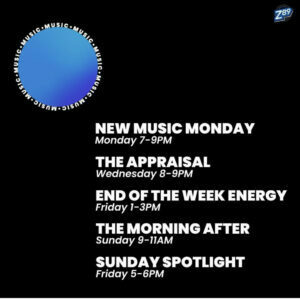The Lessons of Ozzy’s Legacy: How the Prince of Darkness Remained a Beloved Pop-Culture Icon for Decades
Black Sabbath was scary from the start. The first song on its debut album — both called “Black Sabbath” — opens with the sounds of a rainstorm and church bells, then a wicked guitar riff. Then Ozzy Osbourne howls a question: “What is this that stands before me?” When the album came out, in early 1970, it was, pardon the pun, a hell of a question. Led Zeppelin had released its first album a year before, but Sabbath was darker, sludgier, laden with doom. The band’s psychedelic visions were dark and haunted, as far from the colorful optimism of flower power as its native Birmingham, U.K., was from San Francisco.
The first four Sabbath albums — the debut, followed by Paranoid, Master of Reality and Vol. 4 — laid out the blueprint for the entire genre of heavy metal. Osbourne’s success with Sabbath would propel him into a successful solo career as a recording artist and a top touring act. What’s harder to figure out — the light mystery at the heart of the Prince of Darkness — is how he became a sitcom dad in The Osbournes, remained popular enough until this summer to headline the “Back to the Beginning” concert in Birmingham on July 5 and loomed large enough as an icon to receive a tequila-poured tribute from Drake that made it into the paper of record. In the end, even the Gray Lady bowed.
His secret, I suspect, was not taking himself too seriously.
This might sound bonkers considering just how serious Sabbath sounded — not to mention how genuinely frightening Osbourne seemed in the eighties. As a pre-teen early in that decade, I heard rumors that Osbourne bit the head off a live bat (true, but he thought it was fake), did the same to a dove (apparently true) and sacrificed live chickens onstage during his show (I can find no evidence of this, although he apparently once put a chicken full of antifreeze on a fence to scare away coyotes). This sounded dangerous — but, since parents hated it, possibly also fun.
Two decades later, he was a befuddled sitcom dad, struggling to figure out how to work the remote control on The Osbournes. He didn’t seem frightening at all — just slightly confused, dedicated to his family, knowing about his flaws, and much more plainly decent than anyone would have suspected. This figure who once menaced parents was a parent himself — one who just happened to have a job as a rock star.
The reason this worked was that Osbourne was in on the joke. It didn’t always seem that way — mostly because he mumbled. But he knew that the idea that the Prince of Darkness couldn’t housetrain his dogs was comedy gold. And, like few other rock stars, he wasn’t afraid to laugh at himself.
This might seem like slight praise, but how many aging pop stars, especially in rock, realize that, on some level, they are professional entertainers doing a young person’s job? (They can also be serious artists! This isn’t mutually exclusive.) This also changed with the times. In the ’70s and ’80s, a little mystique went a long way — Led Zeppelin hardly ever appeared on television, and it probably helped. By the end of the nineties, maintaining an image seemed tired — the radical move was to embrace exposure, deflate the myth, offer a view backstage, or at least a limited view of it.
Osbourne became bigger than ever. The Osbournes boosted Osbourne’s albums and Ozzfest, and he was on the cover of Rolling Stone in May 2002 and then again in July. In 2004, MTV created “Battle for Ozzfest,” a contest to win a spot on the tour — booking as a revenue stream. His wife, Sharon Osbourne, became a celebrity in her own right, the wickedly funny host of a UK talk show, judge on the UK X-Factor and co-host of The Talk. Sometimes, she was the truly scary one, extreme and even vindictive in the defense of her client and husband. Every artist should be so lucky.
Osbourne slowed down after his 2018 “No More Tours II” concerts — they took place a full quarter decade after his “No More Tours” shows — and his music, at least before his death, didn’t stream in a way that reflected his fame and his appeal as a touring act. He took quite a final bow, however, at “Back to the Beginning,” an all-star metal show that raised £140 million ($188.4 million) for Acorns Children’s Hospice, Birmingham Children’s Hospital and Cure Parkinson’s. It seems like quite a charitable move for a guy who started his career singing about Satan. But the truth is that Osbourne was both more complicated than he appeared — and at the same time not so complicated at all.
Powered by Billboard.


